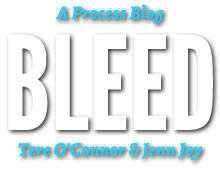Because, as mild and sweet as daybreak in a wood, inspiration was born…Then she made up what she should say. Eyes closed, surrendered, she softly spoke words born in that instant, never before heard by anyone, still tender from their creation—fragile, new shoots. They were less than words, just loose, meaningless, warm syllables that flowed and merged, were fertilized and reborn in a single being only to break apart immediately afterwards, breathing, breathing […] The words coming from before language, from the source, from the source itself. […] Between one instant and another, between past and future, the white vagueness of the interval. Empty like the distance from one minute to the next in the clock’s circle. The bottom of events rising up silent and dead, a little bit of eternity.
—Clarice Lispector, Near to the Wild Heart
Returning to Clarice Lispector is always a strange gift; a poetics inscribed in the seemingly familiar that struggles and abrades meaning. Her words perform a sensuous and at times abusive labor, virtuosic and unnerving. I had been reading her novel Near to the Wild Heart on my way to rehearsal and her voice continued to whisper as I watched—a lacy rough yet quite precise vocal texture, seductively cool alienating syntactical advances and retreats. Lispector conjures an aporia between language and desire, not a void per se, but a densely saturated intensity of sensation, emotion, loss, desire, lust, indifference. Her writing fights against sense demanding something else of language than any singular or legible representation. She choreographs desire as it touches the uncanny tics, twitches, and shudders of the quotidian rendering a complicated poetics that approaches (for me) what Tere describes as the “de-languaging” work of dance.
Some notes from Dance 2, a rehearsal, in no particular order:
Oisin and Silas bend over with arms stretched out behind them, running fast without moving; broken seagulls fighting against the wind, no direction only futile effort.
Standing along the periphery of the studio, they slide to step, slide to step, repeat, shifting balance from one foot to the other and back to trace or smooth over the ground. Writing about the relationship of ground to dance, theorist Paul Carter claims that the ground must be flattened and colonized before any dancing can happen. Karl Marx would say that we must eat before we dance. These regimes (economic, social, cultural) work with the studio apparatus evoking something of a governing force in the work. Even without the barre or mirror, there is nothing neutral about this not really empty studio. The dancers’ clothes, leg warmers, bags, snacks, Styrofoam rollers clutter the wall by the door and we, the small audience, sit watching from the side. Life accumulated in piles along the periphery. How do these ciphers of the exterior of the dance and of experience, of living, animate each rehearsal? The residues of working, classes, rehearsals, relationships, conversations, headlines, subway rides…
The dancers stand, leap, fall; they carry each other.
Heather is lifted into the air, very very slowly. A slowness that alludes to a careful attention to weight and the impossible aspirations of verticality but also of intimacy, the kind that follows after an accident or fight when something is broken or bruised. We never witness the breaks only the prosthetic after-effects.
Standing with their heads falling back, chins upturned like the strange headless creature of Brassai’s photograph that graced Man Ray’s surrealist treaty, Anatomies, they expose the vulnerability of the neck to the knife or camera. Anatomy becomes momentarily unrecognizable and strange. The almost uncanny imagined through the exquisite physicality and technique of the dance evokes a generative illegibility that exploits choreography’s power.
They are couples or partners; sometimes they count.
The dancers form a line close to the audience staring out above my head. Their gaze aspires to non-expressivity, yet reads as the frozen blank look of the dancer concentrating on the dancing internally. When I watch this iteration I experience a confusion of expressivity, or perhaps this is part of the layering of the choreographer’s vision and direction layered over technique in relation to the differential velocities, extensions, textures, qualities of each performer.
Leaving the group, Oisin walks to the back of the space and lies face down on the floor, now behind the other dancers, alone. Disengaged, exhausted, alienated, he almost seems to give in to gravity’s pull, to resist the rise of the other complicated geometries and architectures surrounding him. In the silence between the steps, you might almost hear his breath; his back rises and falls with this subtle effort. Asleep, exhausted, distant, his elegant pale tension holds the other laboring bodies as if suspending the movements all around him. His momentary extraction from the group calls to mind Jérôme Bel’s Véronique Doisneau (2004) that features the almost retired ballerina Véronique Doisneau executing extracts of dances she has performed as a member of the corps de ballet in the Paris Opera House. Yet, in Jérôme’s piece she is now alone in the corner of the stage, her corner as it were. Jérôme distances this piece from an idea of dancing to focus specifically on how it writes a specific body in a specific space and how this encounter narrates not only the relationship between dancer and company, but individual and society. Choreography, etymologically the intertwining of writing and movement, now becomes an intricate entanglement of relations, “a frame, a structure, a language” as Jérôme describes this constellation. Against his imposition of language or riffs on the semiotics or pop cultural sentimentality of words and memories, Dance 2 demands a more subversive play with the structure of the dancing and of the language within and surrounding it. The piece attempts a constantly shifting series of orientations as the dancers exchange roles and positions, never with narrative intent but always in relationship to events—spatial, sensational, temporal.
Always following, always anticipating future trajectories.
—Jenn Joy
